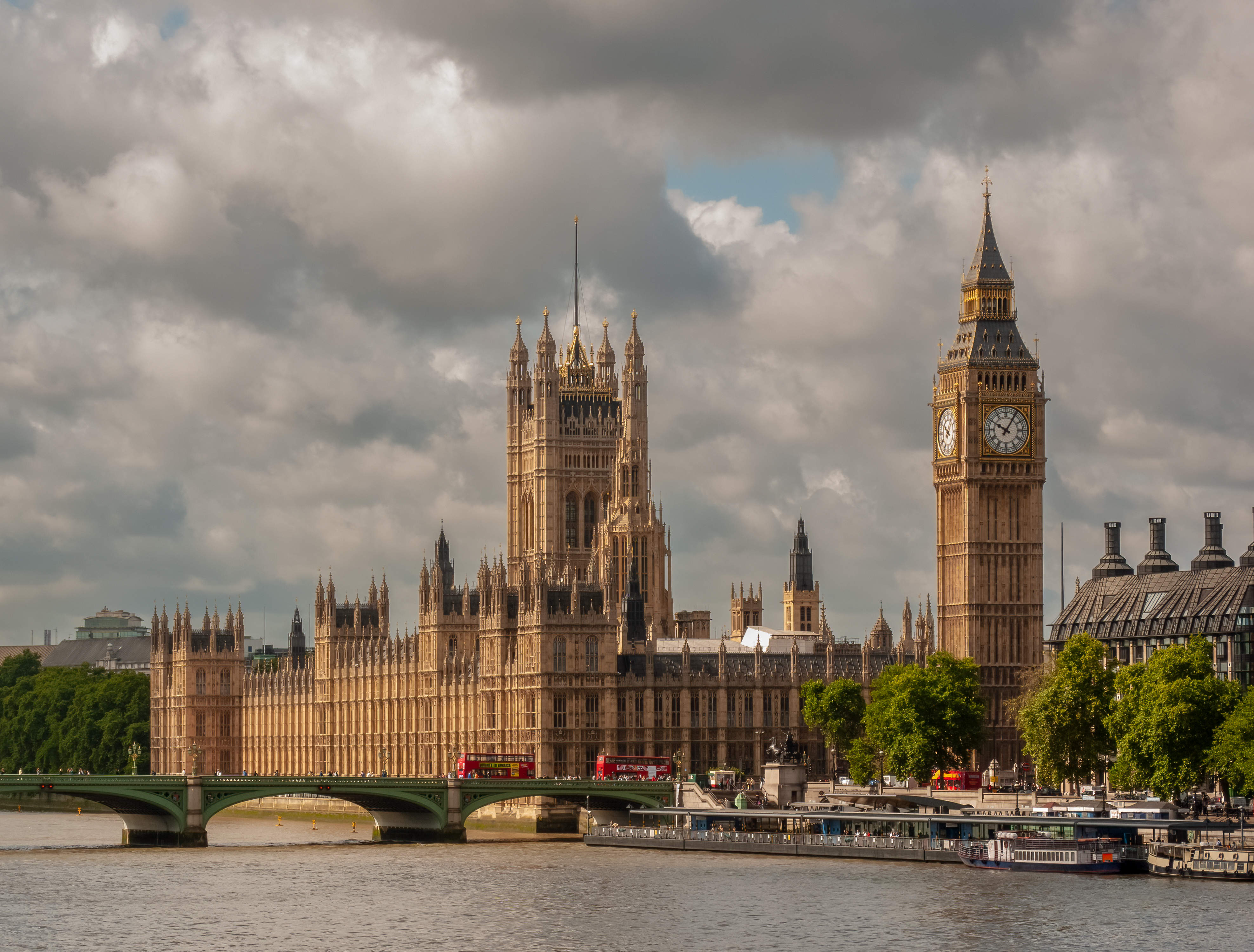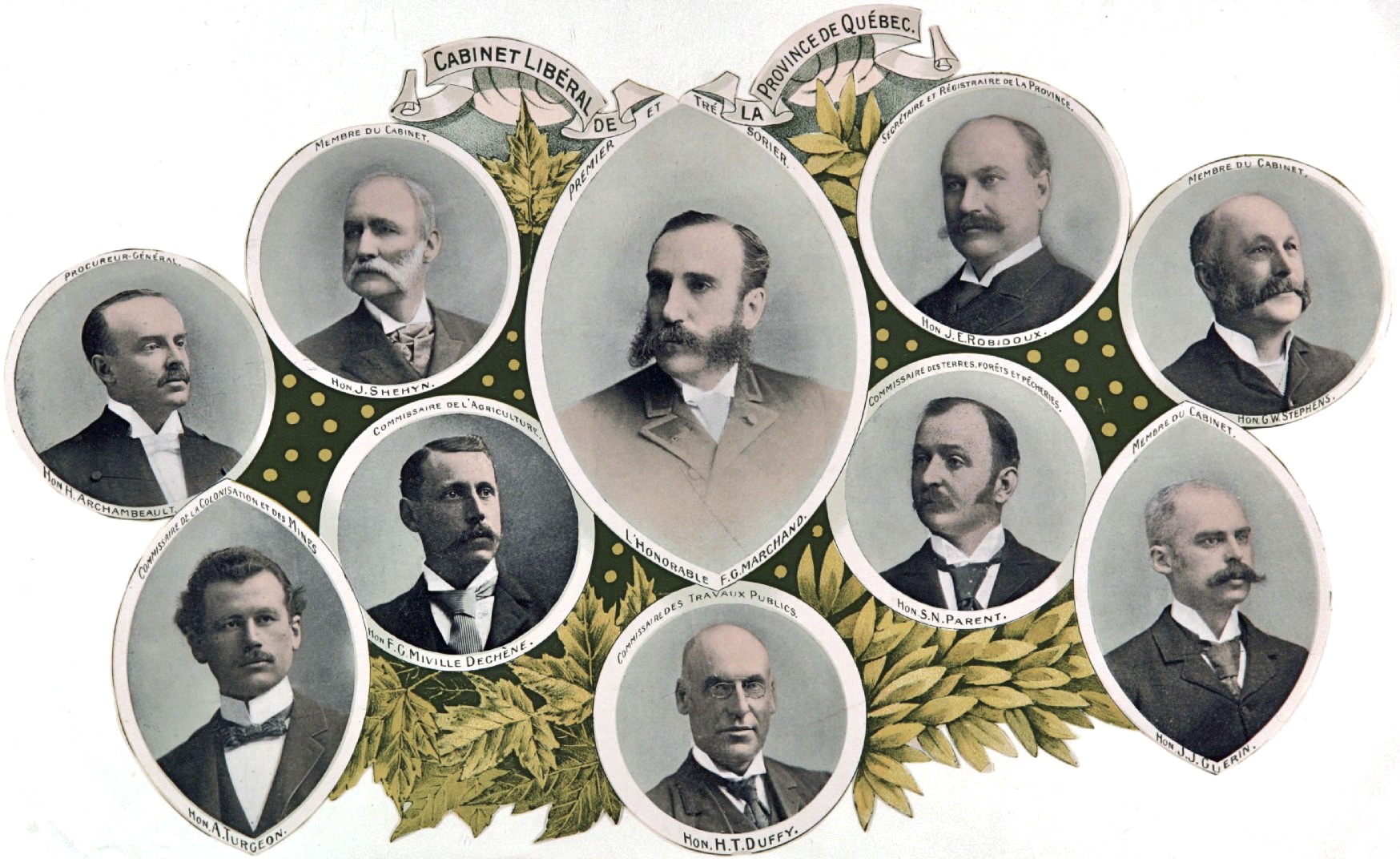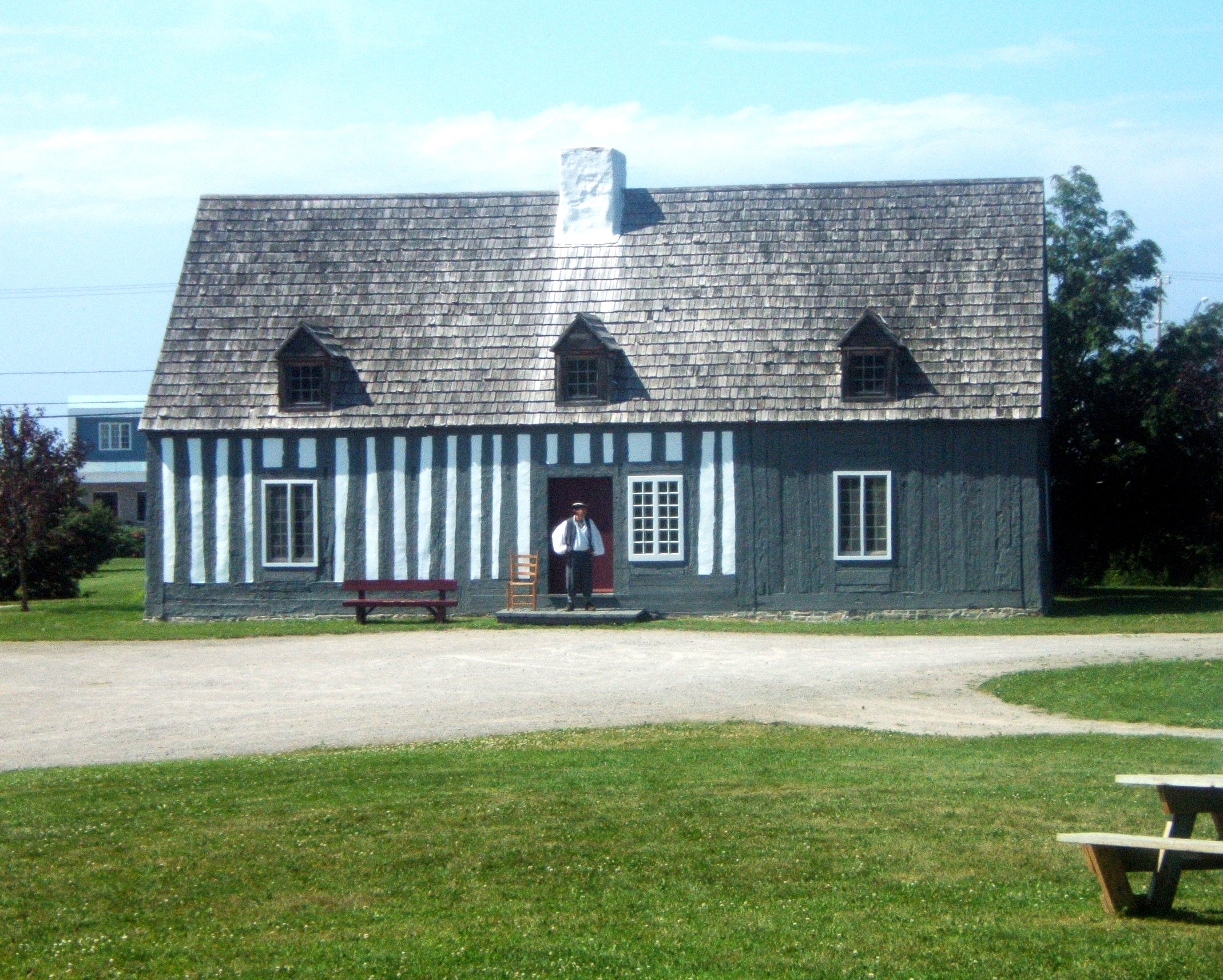|
├Йdouard-On├йsiphore Martin
├Йdouard-On├йsiphore Martin (September 6, 1841 – November 4, 1889) was a lumber merchant and political figure in Quebec. He represented Rimouski in the Legislative Assembly of Quebec from 1886 to 1889 as a Liberal. He was born in Rimouski, Canada East, the son of Henry Martin and Marie-Louise Dessein, dit Saint-Pierre. Martin was educated at the S├йminaire de Qu├йbec and at the Coll├иge de Sainte-Anne-de-la-Pocati├иre. He owned sawmills at M├йtis and Lac Trois-Saumons. Martin was a contractor on the Intercolonial Railway The Intercolonial Railway of Canada , also referred to as the Intercolonial Railway (ICR), was a historic Canada, Canadian railway that operated from 1872 to 1918, when it became part of Canadian National Railways. As the railway was also compl ... from 1870 to 1874. He served in the militia reaching the rank of lieutenant-colonel. He died in office at Rimouski at the age of 48. His brother Alphonse-Fortunat Martin served in the Manitoba legislative a ... [...More Info...] [...Related Items...] OR: [Wikipedia] [Google] [Baidu] |
Quebec
Quebec is Canada's List of Canadian provinces and territories by area, largest province by area. Located in Central Canada, the province shares borders with the provinces of Ontario to the west, Newfoundland and Labrador to the northeast, New Brunswick to the southeast and a coastal border with the territory of Nunavut. In the south, it shares a border with the United States. Between 1534 and 1763, what is now Quebec was the List of French possessions and colonies, French colony of ''Canada (New France), Canada'' and was the most developed colony in New France. Following the Seven Years' War, ''Canada'' became a Territorial evolution of the British Empire#List of territories that were once a part of the British Empire, British colony, first as the Province of Quebec (1763тАУ1791), Province of Quebec (1763тАУ1791), then Lower Canada (1791тАУ1841), and lastly part of the Province of Canada (1841тАУ1867) as a result of the Lower Canada Rebellion. It was Canadian Confederation, ... [...More Info...] [...Related Items...] OR: [Wikipedia] [Google] [Baidu] |
Rimouski (provincial Electoral District)
Rimouski () is a provincial electoral district in the Bas-Saint-Laurent region of Quebec, Canada, that elects members to the National Assembly of Quebec. It notably includes the municipalities of Rimouski and Saint-Anaclet-de-Lessard. It was created for the 1867 election (and an electoral district of that name existed earlier in the Legislative Assembly of the Province of Canada and the Legislative Assembly of Lower Canada). In the change from the 2001 to the 2011 electoral map, it lost Lac-des-Aigles and Biencourt to the newly created Rivi├иre-du-LoupтАУT├йmiscouata electoral district. Members of the Legislative Assembly / National Assembly Linguistic demographics *Francophone: 99.3% *Anglophone: 0.5% *Allophone: 0.2% Election results , - , - , Liberal , Raymond Gigu├иre , align="right", 9,424 , align="right", 35.33 , align="right", , - , - , - , - , Liberal , H├йl├иne M├ ... [...More Info...] [...Related Items...] OR: [Wikipedia] [Google] [Baidu] |
Legislative Assembly Of Quebec
A legislature (, ) is a deliberative assembly with the authority, legal authority to make laws for a Polity, political entity such as a Sovereign state, country, nation or city on behalf of the people therein. They are often contrasted with the Executive (government), executive and Judiciary, judicial powers of government. Legislatures can exist at different levels of governmentтАУnational, state/provincial/regional, local, even supranational (such as the European Parliament). Countries differ as to what extent they grant deliberative assemblies at the subnational law-making power, as opposed to purely administrative responsibilities. Laws enacted by legislatures are usually known as Primary and secondary legislation, primary legislation. In addition, legislatures may observe and steer governing actions, with authority to amend the budget involved. The members of a legislature are called legislators. In a democracy, legislators are most commonly popularly Election, elected, al ... [...More Info...] [...Related Items...] OR: [Wikipedia] [Google] [Baidu] |
Quebec Liberal Party
The Quebec Liberal Party (QLP; , PLQ) is a provincial political party in Quebec. It has been independent of the federal Liberal Party of Canada since 1955. The QLP has traditionally supported a form of Quebec federalist ideology with nuanced Canadian nationalist tones that supports Quebec remaining within the Canadian federation, while also supporting reforms that would allow substantial autonomism in Quebec. In the context of federal Canadian politics,Haddow and Klassen 2006 ''Partisanship, Globalization, and Canadian Labour Market Policy''. University of Toronto Press. it is a more centrist party when compared to Conservative and Liberal parties in other provinces, such as the former BC United, British Columbia Liberal Party. History Pre-confederation The Liberal Party is descended from the Parti canadien (or Parti Patriote), who supported the 1837 Lower Canada Rebellion, and the Parti rouge, who fought for responsible government and against the authority of the Roman ... [...More Info...] [...Related Items...] OR: [Wikipedia] [Google] [Baidu] |
Rimouski, Quebec
Rimouski ( ; ) is a city in Quebec, Canada. Rimouski is located in the Bas-Saint-Laurent region, at the mouth of the Rimouski River. It has a population of 48,935 (as of 2021). Rimouski, whose motto is ''Legi patrum fidelis'' (Faithful to the law of our fathers), is located on the south shore of the Saint Lawrence Estuary, around 300 km downstream of Quebec City. It is the site of Universit├й du Qu├йbec ├а Rimouski (UQAR), the C├йgep de Rimouski (which includes the Institut maritime du Qu├йbec) and the Music Conservatory. It is also the home of some ocean sciences research centres ( see below). History The name Rimouski most likely derived from a Micmac word meaning "land of the moose". The city was founded by Sir Ren├й Lepage de Ste-Claire in 1696. Originally from Ouanne in the Burgundy region, he exchanged property he owned on the ├Оle d'Orl├йans with Augustin Rouer de la Cardonni├иre for the Seigneurie of Rimouski, which extended along the St. Lawrence River from t ... [...More Info...] [...Related Items...] OR: [Wikipedia] [Google] [Baidu] |
Canada East
Canada East () was the northeastern portion of the Province of Canada. Lord Durham's Report investigating the causes of the Upper and Lower Canada Rebellions recommended merging those two colonies. The new colony, known as the Province of Canada, was created by the Act of Union 1840 passed by the Parliament of the United Kingdom, having effect in 1841. For administrative purposes, the new Province was subdivided into Canada West and Canada East. The former name of "Lower Canada" came back into official use in 1849, and as of Canadian Confederation of 1867 it formed the newly created province of Quebec. An estimated 890,000 people lived in Canada East in 1851. Geography It consisted of the southern portion of the modern-day Canadian province of Quebec. It was a former British colony called the Province of Lower Canada. Based on Lord Durham's report it was merged with the Province of Upper Canada (present-day southern portion of the Province of Ontario) to create the Provi ... [...More Info...] [...Related Items...] OR: [Wikipedia] [Google] [Baidu] |
S├йminaire De Qu├йbec
The Seminary of Quebec (French: , ) is a Catholic Church, Catholic community of Secular clergy, diocesan priests in Quebec City founded by Bishop Fran├зois de Laval, the first bishop of New France in 1663. History The S├йminaire de Qu├йbec is a society of diocesan priests founded on March 26, 1663, by Bishop Fran├зois de Laval, first bishop of New France, in order to sustain the mission of the Church in North America. In 1665, he joined this community to that of the Seminary of Foreign Missions of Paris under the name of the Seminary of Foreign Missions of Quebec, from which is derived the acronym SME, still in use today. The first role of the S├йminaire de Qu├йbec was to prepare young men for ordination and ministry in parishes and missions as far away as Louisiana. The Seminary was thus founded together with the Major Seminary, where future priests received their training. In 1668, Jean-Baptiste Colbert, Louis XIV's top minister, initiated an attempt to impose French langua ... [...More Info...] [...Related Items...] OR: [Wikipedia] [Google] [Baidu] |
Intercolonial Railway
The Intercolonial Railway of Canada , also referred to as the Intercolonial Railway (ICR), was a historic Canada, Canadian railway that operated from 1872 to 1918, when it became part of Canadian National Railways. As the railway was also completely owned and controlled by the Government of Canada, the Intercolonial was also one of Canada's first Crown corporations of Canada, Crown corporations. Origins The idea of a railway connecting Britain's North American colonies arose as soon as the railway age began in the 1830s. In the decades following the War of 1812 and ever-mindful of the issue of security, the colonies of Upper Canada, Upper and Lower Canada (later the Province of Canada after 1840) wished to improve land-based transportation with the Atlantic coast colonies of Nova Scotia and New Brunswick, and to a lesser extent Prince Edward Island and Newfoundland and Labrador, Newfoundland. A railway connection from the Province of Canada to the British colonies on the coast w ... [...More Info...] [...Related Items...] OR: [Wikipedia] [Google] [Baidu] |
Alphonse-Fortunat Martin
Alphonse-Fortunat Martin (May 14, 1849 – February 1905) was a land surveyor and political figure in Manitoba. He represented Ste. Agathe from 1874 to 1879 and Morris from 1886 to 1896 in the Legislative Assembly of Manitoba as a Liberal and then as an Independent member. He was born in Rimouski, Canada East, the son of Henri Martin and Marie-Louise Dessein, dit Saint-Pierre, and educated at the college there and the Quebec military school. From 1868 to 1870, Martin served as a Papal zouave. He qualified as a provincial land surveyor in 1871. In 1874, he married Louise Radiger. Martin was editor of ''Le Courrier du Nord (Ouest)''. He came to Manitoba in 1872 as a surveyor for the federal government and settled in West Lynn. In 1875, he was chosen to be opposition leader in the Manitoba assembly. Martin was defeated when he ran for reelection in 1879 and 1883 before being elected again in Morris. He was unsuccessful in bids for reelection in 1896 and 1899. After he retired f ... [...More Info...] [...Related Items...] OR: [Wikipedia] [Google] [Baidu] |
Quebec Liberal Party MNAs
Quebec is Canada's largest province by area. Located in Central Canada, the province shares borders with the provinces of Ontario to the west, Newfoundland and Labrador to the northeast, New Brunswick to the southeast and a coastal border with the territory of Nunavut. In the south, it shares a border with the United States. Between 1534 and 1763, what is now Quebec was the French colony of ''Canada'' and was the most developed colony in New France. Following the Seven Years' War, ''Canada'' became a British colony, first as the Province of Quebec (1763тАУ1791), then Lower Canada (1791тАУ1841), and lastly part of the Province of Canada (1841тАУ1867) as a result of the Lower Canada Rebellion. It was confederated with Ontario, Nova Scotia, and New Brunswick in 1867. Until the early 1960s, the Catholic Church played a large role in the social and cultural institutions in Quebec. However, the Quiet Revolution of the 1960s to 1980s increased the role of the Government of Queb ... [...More Info...] [...Related Items...] OR: [Wikipedia] [Google] [Baidu] |
1841 Births
Events JanuaryтАУMarch * January 20 тАУ Charles Elliot of the United Kingdom and Qishan of the Qing dynasty agree to the Convention of Chuenpi. * January 26 тАУ Britain occupies Hong Kong. Later in the year, the first census of the island records a population of about 7,500. * January 27 тАУ The active volcano Mount Erebus in Antarctica is discovered, and named by James Clark Ross. * January 28 тАУ Ross discovers the "Victoria Barrier", later known as the Ross Ice Shelf. On the same voyage, he discovers the Ross Sea, Victoria Land and Mount Terror. * January 30 тАУ **El Salvador proclaims itself an independent republic, bringing an end to the Federal Republic of Central America. **A fire destroys two-thirds of the city of Mayag├╝ez, Puerto Rico. * February 4 тАУ The first known reference is made to Groundhog Day, celebrated in North America, in the diary of a James Morris. * February 10 тАУ The Act of Union (''British North America Act'', 1840) is proclaimed ... [...More Info...] [...Related Items...] OR: [Wikipedia] [Google] [Baidu] |







